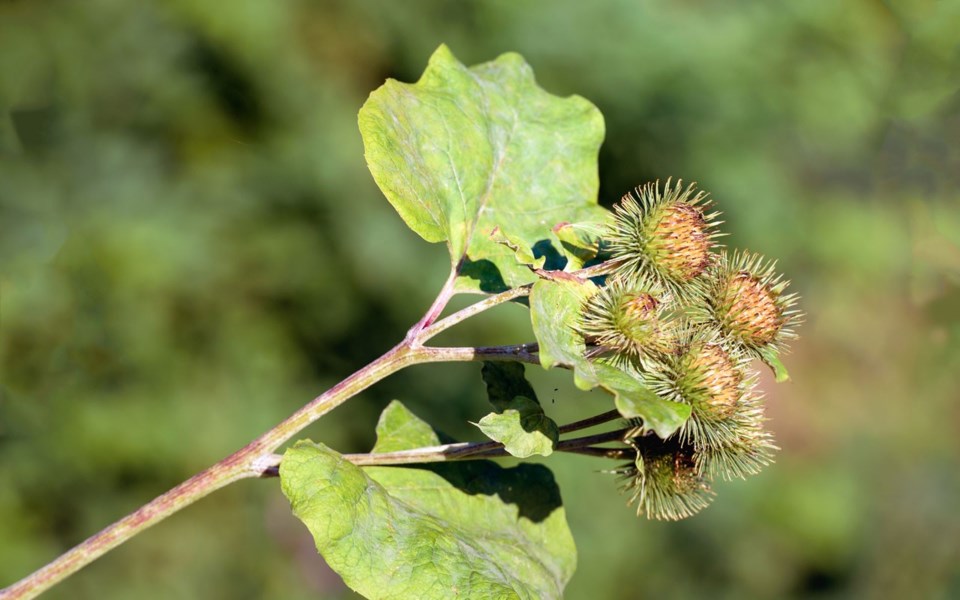Have you ever been walking along the Valley Trail only to end up covered in burrs? Or your pooch comes back with a tail full of pesky burrs that take hours to brush out of their fur? This is all the work of the invasive plant Common Burdock (Arctium minus).
Native to Europe, this plant was first reported in North America circa 1640, most likely arriving here accidentally. It prefers fertile soils and disturbed areas where it can establish itself easily.
Common burdock has some practical uses, including in traditional herbal medicine to treat psoriasis and eczema. In traditional Chinese medicine, this plant is often used for sore throats and colds in combination with other plants. Despite these uses and benefits, burdock brings some problems along with it.
It is a biennial plant with wavy-edged, heart-shaped leaves and purple flowers. In its second year, it will grow up to three metres tall and produce the burrs we are all familiar with. These burrs can contain an enormous number of seeds, with each plant producing upwards of 15,000.
The burrs will often hitch a ride on animals and humans, spreading into pristine areas we visit. These burrs are so good at sticking to things that they are actually what inspired George de Mestral to invent Velcro!
Once established, burdock is particularly problematic in agricultural areas since it is a host for mildew and root rot, often spoiling economically important plants. The burrs can also trap small birds and bats that aren't strong enough to escape the plant's grip.
Burdock has taken over much of Whistler, and it is particularly abundant along the edges of the Valley Trail. This extremely well travelled trail system has become a transport corridor for the plant to spread into previously burdock-free areas.
So what are we doing to help stop this invasive plant?
We are imploring all the plant vigilantes in the Whistler community to join us in removing the burdock along the Valley Trail!
The Adopt-A-Trail campaign is aimed at bringing community members together as they "adopt" a section of the Valley Trail for the season, and commit to removing the burdock present in their section. We are hoping that in this way, we can start pushing back on the burdock population in Whistler and prevent it from spreading further into people's yards and along other trails.
Burdock is removed by first cutting and bagging any burrs present. Afterwards, the taproot needs to be severed below the root collar—where the stem becomes the root—with a shovel or a mattock. The leaves can be left to decompose wherever the burdock was removed. The bagged plant parts, if in large quantities, should be taken to the Callaghan transfer station and disposed of in the invasive species bin. But if the load is small people can bag the burdock and dispose of it in the general waste.
Invasive plants should never be composted, since some can actually survive the composting process.
This is a great opportunity to learn about invasive species and make a difference for the Whistler community.
Have a section close to your home or work that you would like to adopt? We would love to hear from you! To sign up for a section or find out more, visit www.ssisc.ca/burdock.




